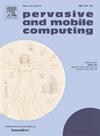通过技能和意愿与劳动力构成平衡相一致的任务分配来增强众包
IF 3.5
3区 计算机科学
Q2 COMPUTER SCIENCE, INFORMATION SYSTEMS
引用次数: 0
摘要
众包平台在任务分配和员工保留方面面临着严峻的挑战,特别是在确保劳动力多样性和平衡构成的同时,如何将复杂的、技能密集型的任务与众包工人的意愿和潜力结合起来。本研究引入了技能对齐任务分配和潜力感知劳动力构成(SATA-PAW)框架来解决这些挑战。该框架将劳动力构成平衡任务分配(Task Assignment with Workforce Composition Balance, TACOMB)问题表述为一个多约束优化任务,目的是在任务预算约束下实现净效用最大化,同时促进劳动力构成平衡。SATA-PAW集成了两种新颖的算法,一种是技能对齐任务分配(SATA)算法,它通过考虑技能、意愿和预算约束来优化任务与工人的匹配;另一种是潜力感知劳动力构成(PAW)算法,它利用满意度评分和潜在潜力来留住熟练工人,并提高劳动力多样性。在真实世界(UpWork)和合成数据集上的实验评估表明,SATA-PAW优于五种最先进的方法。结果表明,SATA-PAW能够将以人为中心的因素与高效优化相结合,为众包系统中以技能为导向的任务分配和平衡的劳动力构成设定了新的基准。本文章由计算机程序翻译,如有差异,请以英文原文为准。
Enhancing crowdsourcing through skill and willingness-aligned task assignment with workforce composition balance
Crowdsourcing platforms face critical challenges in task assignment and workforce retention, particularly in aligning complex, skill-intensive tasks with crowd-worker willingness and potential while ensuring workforce diversity and balanced composition. This study introduces the Skill-Aligned Task Assignment and Potential-Aware Workforce Composition (SATA-PAW) framework to address these challenges. The proposed framework formulates the Task Assignment with Workforce Composition Balance (TACOMB) problem as a multi-constraint optimization task, aiming to maximize net utility under task budget constraints while promoting balanced workforce composition. SATA-PAW integrates two novel algorithms, Skill-Aligned Task Assignment (SATA), which optimizes task-worker matching by considering skills, willingness, and budget constraints, and Potential-Aware Workforce Composition (PAW), which leverages satisfaction score and latent potential to retain skilled workers and improve workforce diversity. Experimental evaluations on real-world (UpWork) and synthetic datasets demonstrate SATA-PAW’s superiority over five state-of-the-art methods. The results highlight SATA-PAW’s ability to integrate human-centric factors with efficient optimization, setting a new benchmark for skill-oriented task assignment and balanced workforce composition in crowdsourcing systems.
求助全文
通过发布文献求助,成功后即可免费获取论文全文。
去求助
来源期刊

Pervasive and Mobile Computing
COMPUTER SCIENCE, INFORMATION SYSTEMS-TELECOMMUNICATIONS
CiteScore
7.70
自引率
2.30%
发文量
80
审稿时长
68 days
期刊介绍:
As envisioned by Mark Weiser as early as 1991, pervasive computing systems and services have truly become integral parts of our daily lives. Tremendous developments in a multitude of technologies ranging from personalized and embedded smart devices (e.g., smartphones, sensors, wearables, IoTs, etc.) to ubiquitous connectivity, via a variety of wireless mobile communications and cognitive networking infrastructures, to advanced computing techniques (including edge, fog and cloud) and user-friendly middleware services and platforms have significantly contributed to the unprecedented advances in pervasive and mobile computing. Cutting-edge applications and paradigms have evolved, such as cyber-physical systems and smart environments (e.g., smart city, smart energy, smart transportation, smart healthcare, etc.) that also involve human in the loop through social interactions and participatory and/or mobile crowd sensing, for example. The goal of pervasive computing systems is to improve human experience and quality of life, without explicit awareness of the underlying communications and computing technologies.
The Pervasive and Mobile Computing Journal (PMC) is a high-impact, peer-reviewed technical journal that publishes high-quality scientific articles spanning theory and practice, and covering all aspects of pervasive and mobile computing and systems.
 求助内容:
求助内容: 应助结果提醒方式:
应助结果提醒方式:


